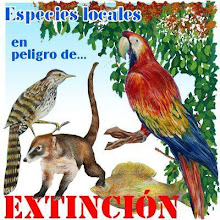
What is Mega Diversity?
It refers to the fact that some countries posses more biodiversity than others; it means, they present more species, all different, living together into a determined portion of space which contains aquatic bodies and land at different altitudes and latitudes.
Does it have any relation with the endangered species?
Because of all species, including human beings are parts of a bigger and more complex system; and every specie have suffered an evolutive process, depending on how much that environment had changed too, permitting to appear new types of individuals, better adapted to its environment. As it was said before, not all the new species continues life, many just die due to the lack of speciation (biological and genetic adaptation). And just by knowing the characteristics and components of any ecosystem, it is possible to determine which the endangered species are, which are the sources overexploited, and what to do to stop the causes along with the design of programs to save them.
Why is important to know what biodiversity is and what it represents?
Because of all the services, benefits, and advantages provided to the social life and to the environment balance. Being mega diverse represents a huge responsibility of taking care, preserve, and make an adequate usage of the natural and ecological sources; in other words, it means to guarantee its existence. Besides, it allows us to live in the planet, by provide a balanced world, a nice place to live.
Some countries, known as megadiverses, have signed a document noticing the plus value (strategic, economic, and social) of all the natural sources; it establishes the urgent necessity of making laws for an equally distribution of the sources, avoiding its overexploitation; and suggesting these countries to adopt common postures toward a rational usage of their sources.
Basically, it is about change the visions we have about the nature and to stop see ourselves as an element apart; is about to assume our responsibility in the search of long term solutions and the establishment of conservation and protection programs and strategies.



















